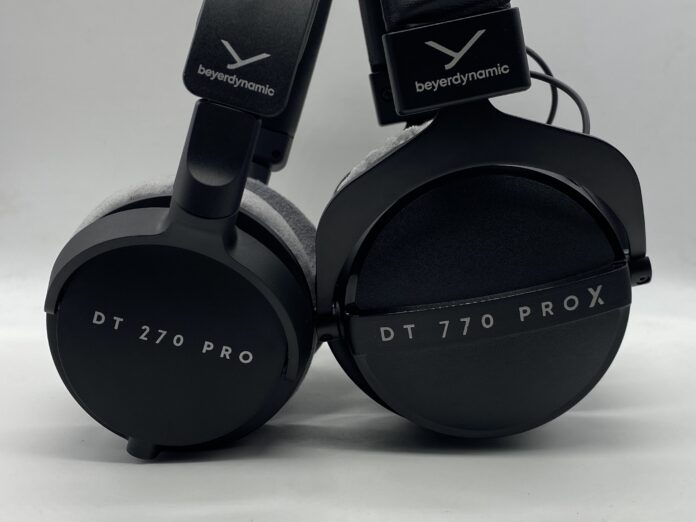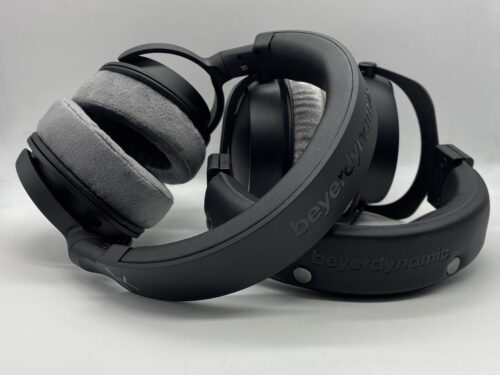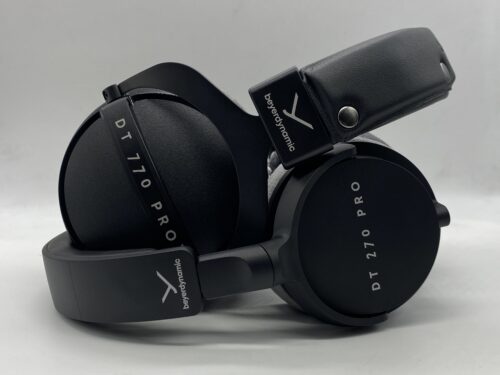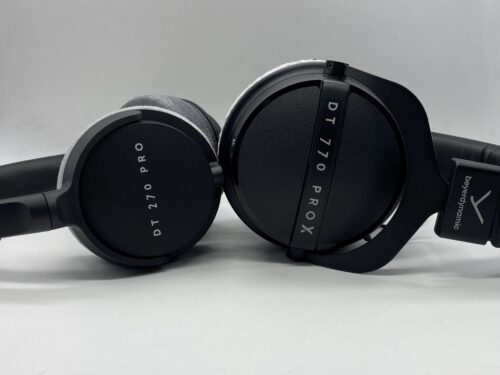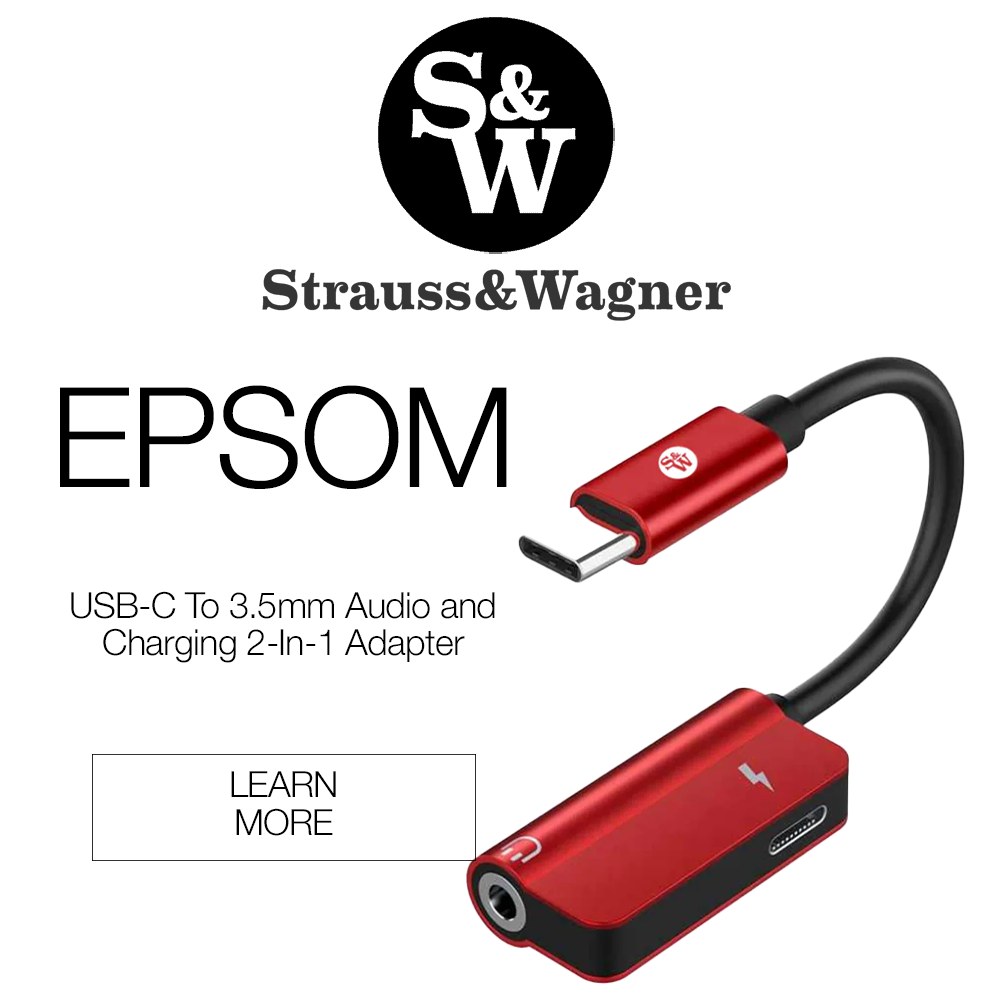Beyerdynamic remains one of the most trusted names in studio monitoring, known for crafting headphones that balance analytical sound with long-lasting comfort. Among its lineup, the DT 270 Pro and DT 770 Pro X represent two distinct approaches to professional listening. The DT 270 Pro is built for creators who split their time between the studio and the field, while the DT 770 Pro X is a modern evolution of Beyerdynamic’s classic studio workhorse. Both offer the brand’s renowned sound quality, but their design and sonic personalities make them unique. Let’s explore how they compare in design, sound, and use.
What You Get
| DT 270 Pro | DT 770 Pro X |
|
|
Look & Feel
The DT 270 Pro is the lightweight sibling of Beyerdynamic’s larger studio models. Its compact earcups and relaxed clamp pressure make it ideal for creators who move between the studio and the field. The soft velour earpads, a Beyerdynamic staple, keep it comfortable during long sessions, while the smaller footprint makes it surprisingly portable. The DT 770 Pro X, meanwhile, brings Beyerdynamic’s classic industrial design into the modern age. The build is more substantial, featuring metal yokes, plush memory-foam padding, and a detachable Mini-XLR cable for easy replacement. It’s heavier at roughly 305 grams, but it feels like a headphone built to withstand daily studio use.
Design
At the heart of these two headphones are very different drivers tailored to their intended purpose. The DT 270 Pro houses a dynamic transducer designed for efficient playback across portable and professional sources. Its 48-ohm impedance and responsive diaphragm deliver a balanced output even from compact audio interfaces or handheld recorders. The DT 770 Pro X, meanwhile, introduces Beyerdynamic’s STELLAR.45 driver. Using a powerful neodymium magnet system and a lightweight copper voice coil, it achieves exceptional transient response and linearity across the frequency spectrum. This technology allows the Pro X to capture the smallest sonic details with remarkable accuracy while keeping distortion levels extremely low, even at higher volumes. The result is a studio-grade presentation that competes with open-back monitors in terms of clarity and dynamic realism.
Soundstage
The DT 270 Pro impresses with a spacious stereo field that feels larger than its smaller design would suggest. The presentation leans slightly intimate compared to open-back models, but the imaging remains clear and directional. Instruments occupy defined spaces without overlapping, making it easy to track panning decisions or spatial reverb effects. By contrast, the DT 770 Pro X expands the soundstage noticeably. Its imaging precision and left-to-right separation create a more holographic mix environment. Instruments are layered deeper, with more front-to-back dimension. This added spatial realism makes the Pro X better suited for mixing, as you can more easily pinpoint placement in dense arrangements. If you rely on stereo cues for production, the 770 Pro X gives you more room to work with.
Low End
The DT 270 Pro offers a well-balanced low-end that’s neither exaggerated nor absent. The sub-bass extends smoothly, providing enough rumble for cinematic material and electronic tracks without clouding the mids. Its bass sits tight and controlled, giving just a touch of warmth to keep the signature musical and engaging. It’s an enjoyable but honest low-end, clean enough for monitoring, rich enough for casual listening.
On the DT 770 Pro X, the bass is even more disciplined. There’s less mid-bass warmth and more linearity, which translates to accuracy rather than emphasis. Kick drums feel taut, not boomy; sub-bass remains audible but never overbearing. The result is a more reference-grade foundation that rewards clean recordings and well-balanced mixes. Listeners seeking a fun, boosted bass might prefer the DT 270 Pro, but professionals looking for low-end truth will gravitate toward the Pro X.
Mids
The DT 270 Pro delivers a natural, slightly warm midrange that flatters vocals and acoustic instruments. The DT 770 Pro X, however, shines in midrange detail. Its presentation is cleaner and more transparent, revealing subtle textures like breath, fret noise, or reverb tails. With the DT 270, there’s a pleasant fullness in the lower mids that keeps guitars, pianos, and male vocals grounded. Upper mids stay smooth, avoiding the nasal or aggressive qualities some studio headphones can exhibit. The overall tone feels balanced, ideal for creators who want an accurate yet forgiving representation of their recordings.
Vocal presence sits more forward on the DT 770 Pro X, allowing for confident EQ and mix adjustments. The trade-off is that the mids can sound slightly leaner compared to the DT 270 Pro’s warmth, but that neutrality is intentional. For those who mix or master professionally, the Pro X’s midrange precision is a clear advantage.
Highs
High frequencies are where Beyerdynamic often divides listeners, but here both headphones take a refined approach. The DT 270 Pro smooths out the top end for fatigue-free listening. Cymbals and strings have air without harshness, and sibilance remains under control even at higher volumes. This makes it a solid choice for long sessions or consumer playback, where comfort and musicality matter as much as detail.
The DT 770 Pro X restores some of the sparkle associated with classic Beyerdynamic tuning but tempers it with control. Treble is crisp and revealing, enhancing spatial cues and definition without becoming piercing. The clarity up top helps expose imperfections during mixing or mastering, ideal for those who demand transparency. Compared to the DT 270 Pro, the Pro X is brighter and more analytical, but still smooth enough for professional use.
Summary
Both the Beyerdynamic DT 270 Pro and DT 770 Pro X showcase the company’s mastery of closed-back headphone design, but their goals diverge. The DT 270 Pro focuses on comfort, portability, and musical neutrality, making it an excellent all-rounder for creators who move between environments. The DT 770 Pro X, equipped with its advanced STELLAR.45 driver prioritizes analytical accuracy and studio reliability, offering a sharper tool for professional production and mixing.
If you want an adaptable headphone that sounds great anywhere, the DT 270 Pro delivers that balance effortlessly. If you’re chasing uncompromising studio precision with cutting-edge driver technology, the DT 770 Pro X stands out as the superior long-term investment, a true studio classic in modern form.
The Beyerdynamic DT 270 Pro and DT 770 Pro X are available at Audio46.
MAJORHIFI may receive commissions from retail offers.


